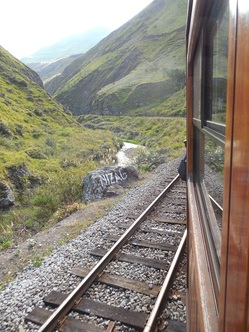
Our time here is getting short, and there are a few places we want to make sure to see. In this case, the town of Alausí, which is the launching point for the steepest segment of rail travel in Ecuador called the Devil’s Nose. We decided to rent a car for this excursion. Buses are a cheaper option, but bus travel is nothing like a road trip in your own car. The car allowed us to stop to eat when we wanted, make pit stops as needed, and stay at a hostal outside of town.
Our first stop was at the “Bufalo Bill” restaurant in Cañar (close to the Ingapirca ruins) for lunch. What group of Coloradans could resist stopping at a place called Bufalo Bill? As we entered the restaurant Doug exclaimed to the shocked patrons “hitch up the wagon pardners, we’re heading west.” Well, no, not really, but that would have been an amusing sight. Despite the lack of theatrics, the food turned out to be excellent. No buffalo meat or Old West themed items on the menu, but we enjoyed a great meal for 4 for under $15.
We arrived in the mountain valley town of Alausí in the early afternoon just as it began to pour. We had picked a hostal on the outskirts of town for its vibrant flower garden and large open space – the former for peace of mind, the latter so the kids could burn off some energy. Luckily it also had a rec room with ping pong and pool tables, and we were able to get some play time in despite the downpour. Equally enjoyable was listening to the heavy drops of rain fall on the tin roof, and watching the clouds roll in and slide down the steep mountain slopes.
The next day was clear, promising dramatic vistas throughout the train ride. This was the kids’ first real train ride and we were enchanted by the railcars, retractable tables, and comfy seats. The segment of rail we traveled was part of a broader system that provides access between Quito in the northern highlands, the coastal port city of Guayaquil, and Cuenca in the southern highlands. Construction began in the late 1800s with the help of a North American engineer and thousands of workers imported from the Caribbean. The countryside is gorgeous. But at the time the railroad was built, yellow fever, malaria and dengue were common and the technology used to build railways consisted of dynamite and hand shovels. An astounding 1,200 people lost their lives in the railway’s construction, most due to blasting accidents.
Coming from Colorado you’d think I would be used to steep mountainsides. But the Andes are a whole different level of steep. I’m not sure the pictures do justice to just how perpendicular the landscape feels. Perhaps more indicative: when we booked the tickets for the train we were asked whether we wanted the side of the car that looks out to the mountain or the side that looks into the “abyss”. The segment of rail we traveled drops 1,970 feet in just 6.25 miles. Since a rail track with gentle curves and moderate descent were not options for the terrain, the engineers decided to employ a “zigzag” technique. In Spanish it is called “ziiig zahg”. Imagine a large Z carved into the side of a mountain, or a trail switchback. The forward-moving train fully passes the switchback on a short extension of that rail segment (say the upper line of the Z), levers are moved, and then the train proceeds backwards down on the new rail segment (the slanty part of the Z). Then does it again, this time moving forwards again, once it gets to the bottom section of the Z. It was fun to experience the system in action. The name of the route is said to come from the face that can be seen on the side of the mountain that dominates the zigzag section. It may also come from the experience of the workers who helped complete the rail.
The tourism projects of the railway are managed by a public enterprise with an emphasis on benefiting local communities. The destination of the Devil’s Nose train is the Sibambe station where we were greeted by dancers from the local community of Nizag, as well as pet llamas and vendors. The dancers looked a little less than enthusiastic during their welcoming dance. I can’t blame them since there are three trains a day. I imagine there is not much to do at the station in between train arrivals. But after performing their traditional dances they invited the tourists to dance with them and everyone seemed to have more fun that way. It was an unexpected, but nice, surprise.
Sunday is market day in Alausí. On the train ride we were able to see the animal market in the distance. The town itself was packed full of people doing business and lots of trucks transporting both goods and people. We climbed up to a huge 30-foot statue of San Pedro (St. Peter) in a park that overlooks the city. The statue looked to be made of concrete and was covered with colored tiles. The park provided incredible views of Alausí and the surrounding countryside.
The road from Cuenca to Alausí is the Panamerican Highway, although in most places it is just one lane each direction. It goes through cloud forest in some places and on our way to Alausí we were driving through clouds for a good portion of the trip. On the way back we had fewer clouds and I took pictures of the towns and houses we passed, as well as the pedestrians for whom the highway is the preferred route from town to town. I’m always fascinated by the variety of housing found in relatively close proximity, ranging from very nice newer construction, to traditional adobe, to abandoned and half-finished ugly concrete skeleton structures. I also documented the roadside signs that promote conservation and respect for the environment, which we’ve seen on all the roads we’ve traveled in Ecuador.
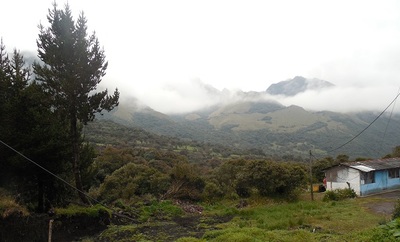
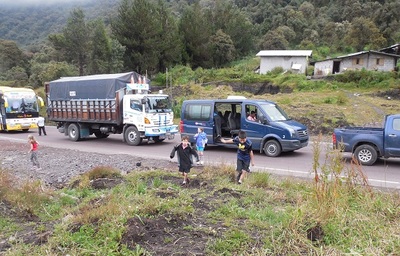
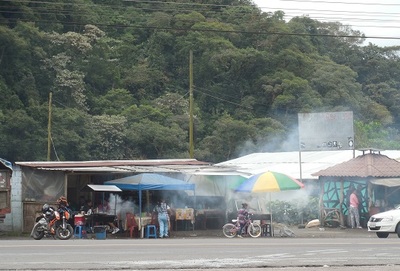
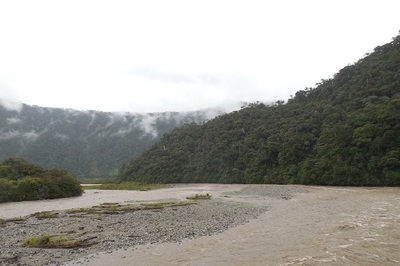
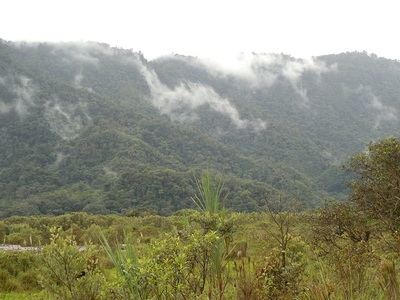
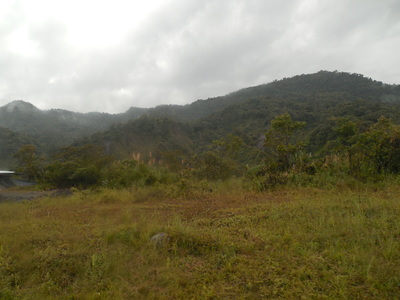
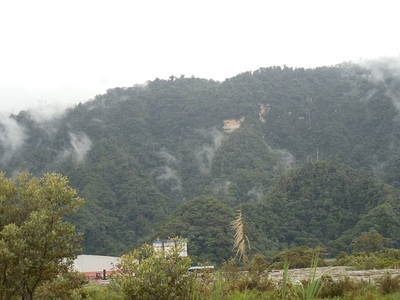

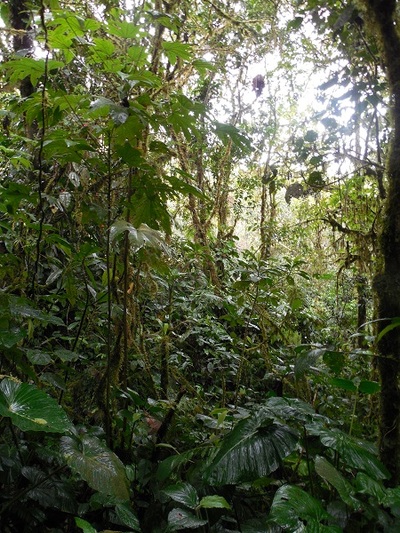
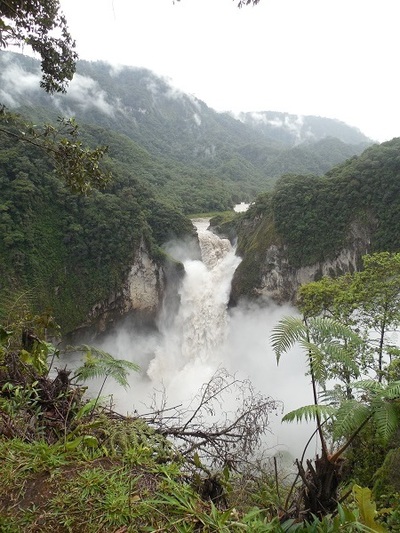

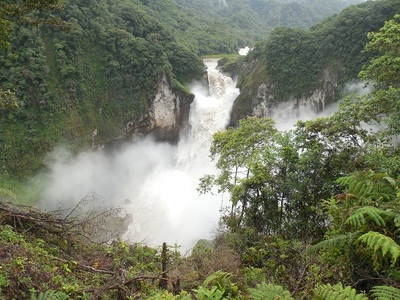
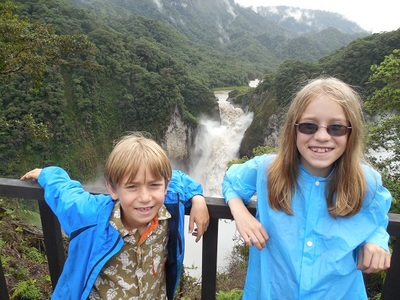
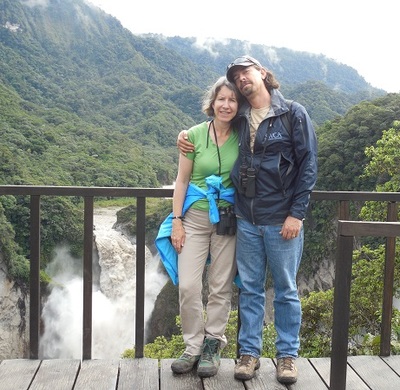
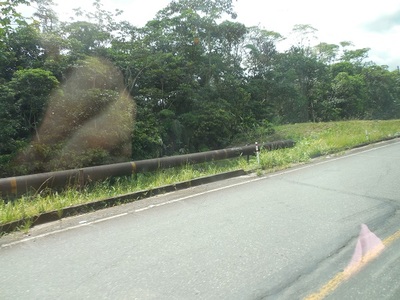
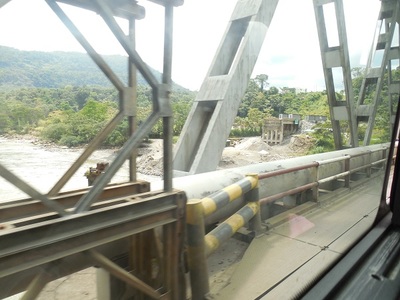
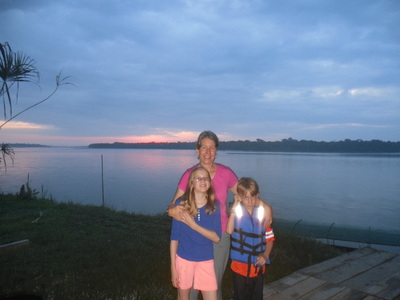
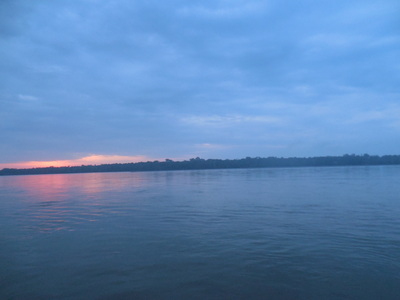

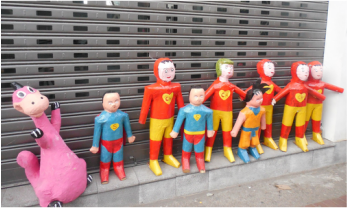
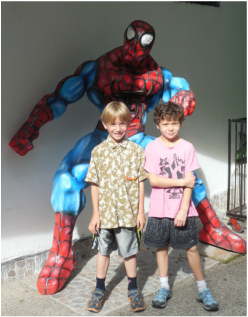
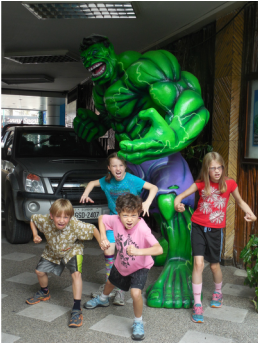
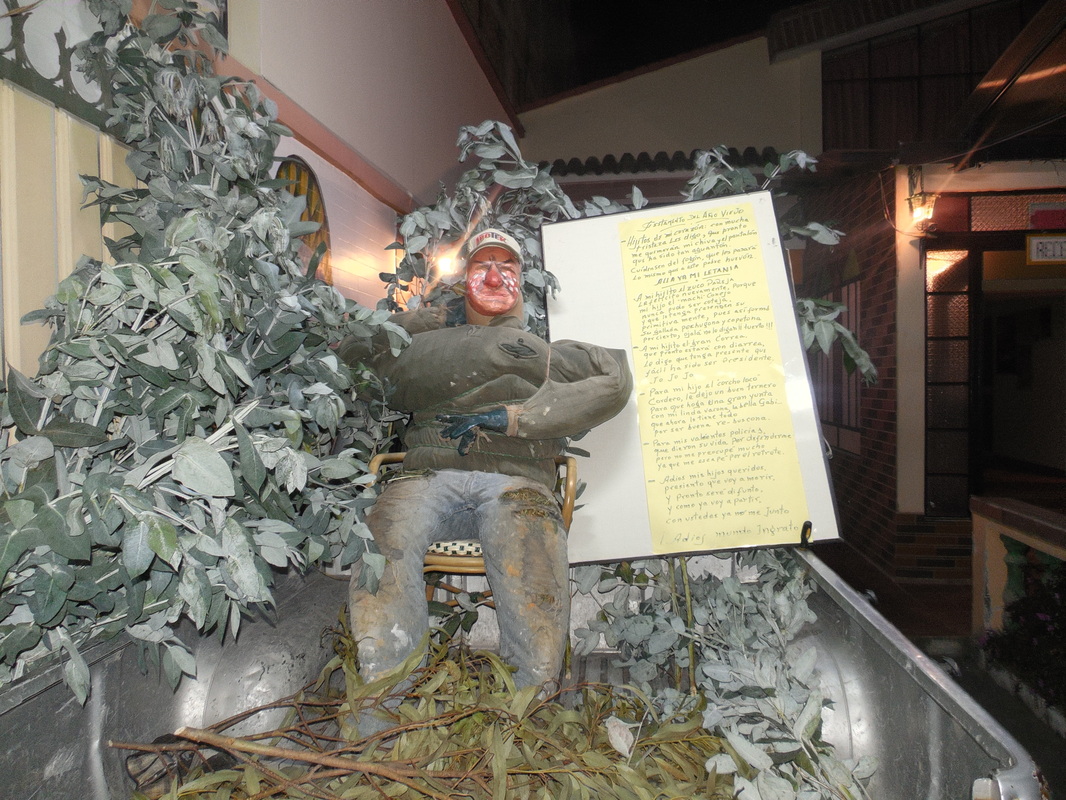

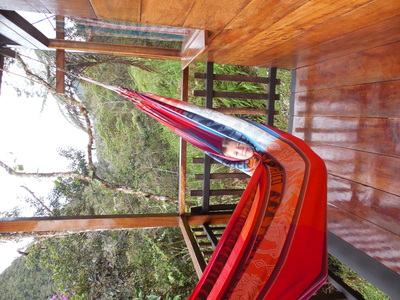
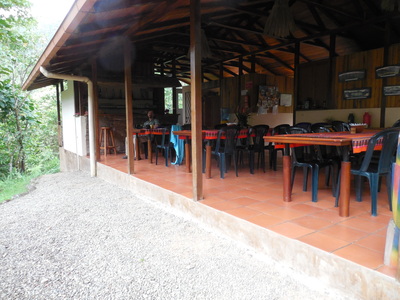
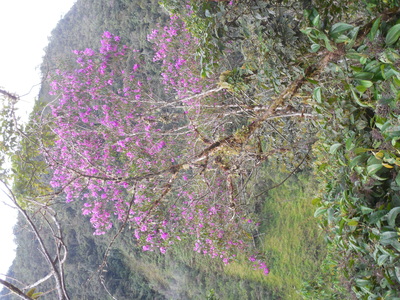

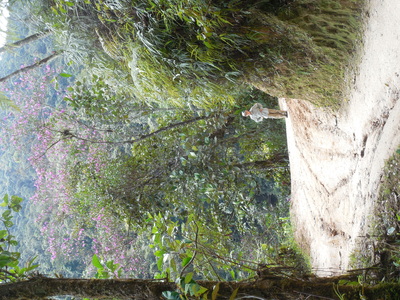
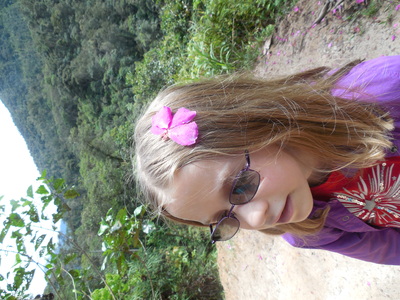
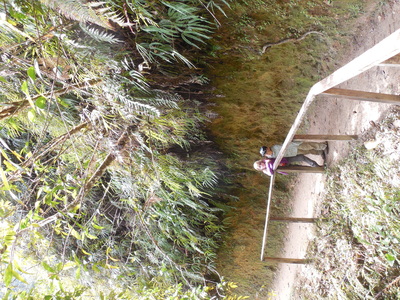
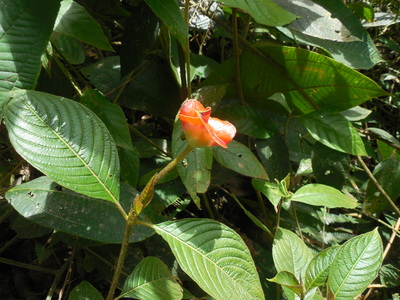
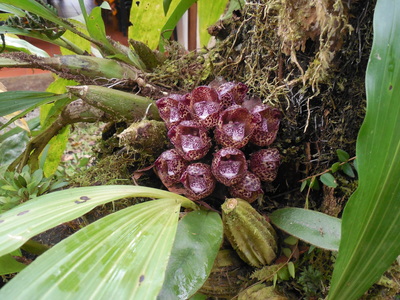
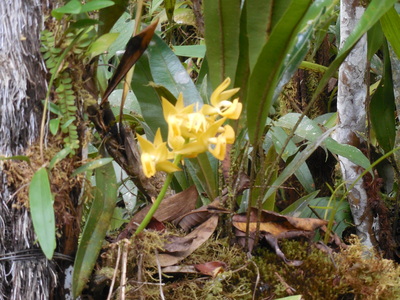
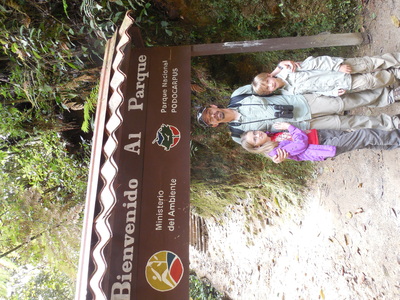
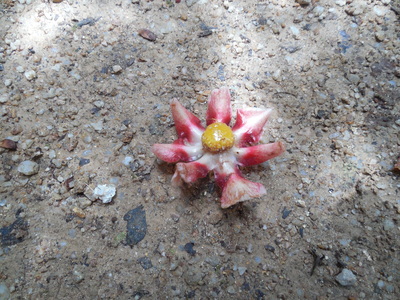
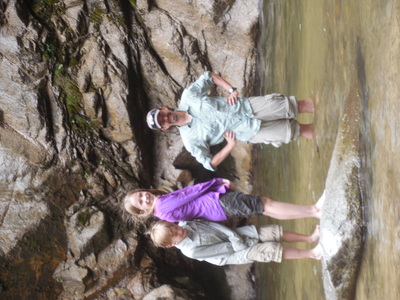
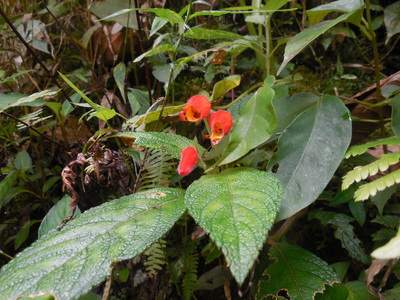

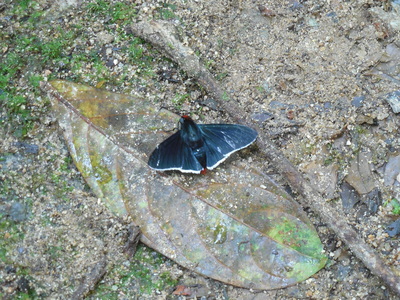
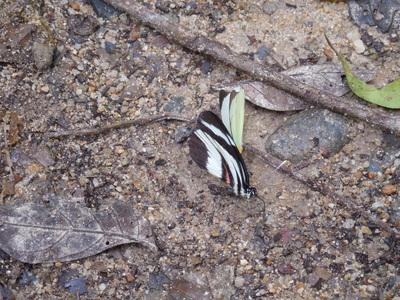
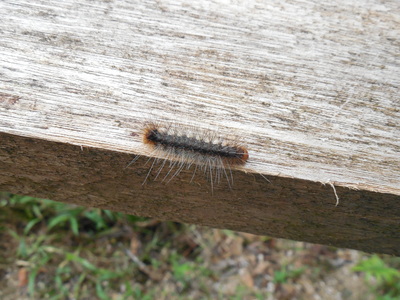
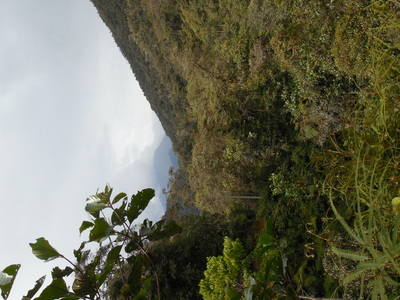
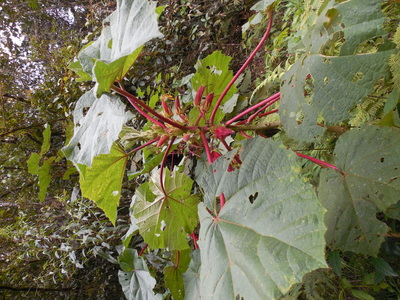
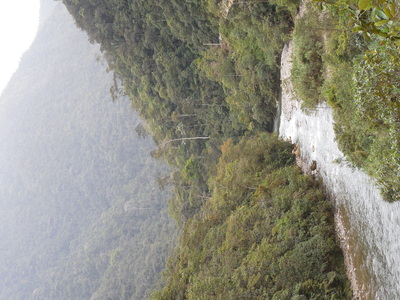
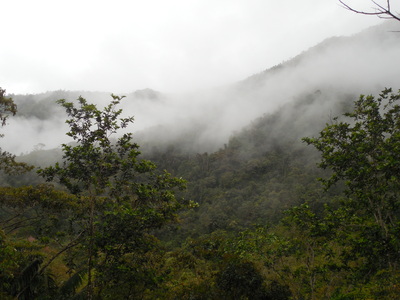
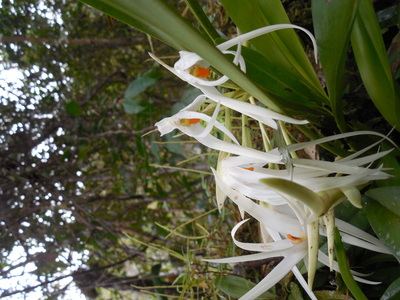
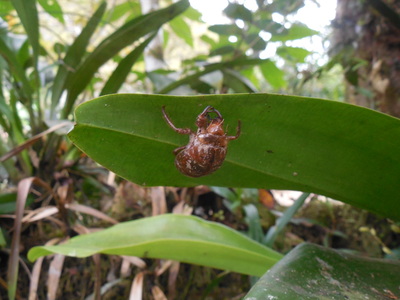
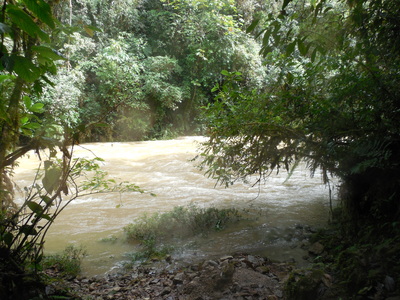

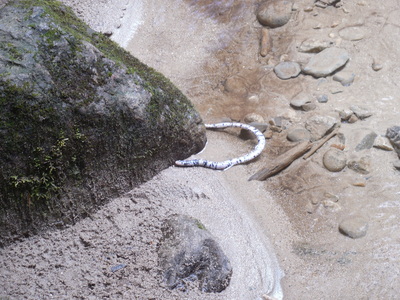
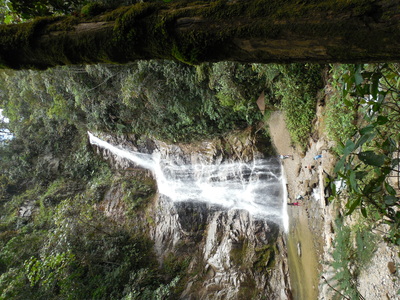
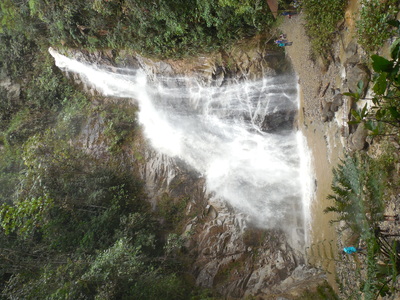
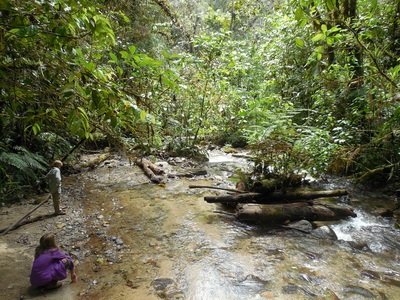
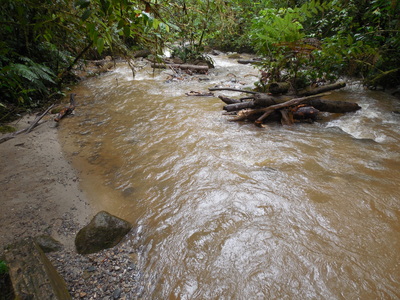
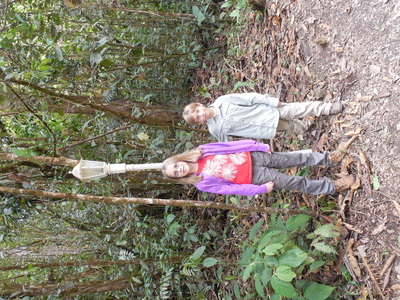

 RSS Feed
RSS Feed
